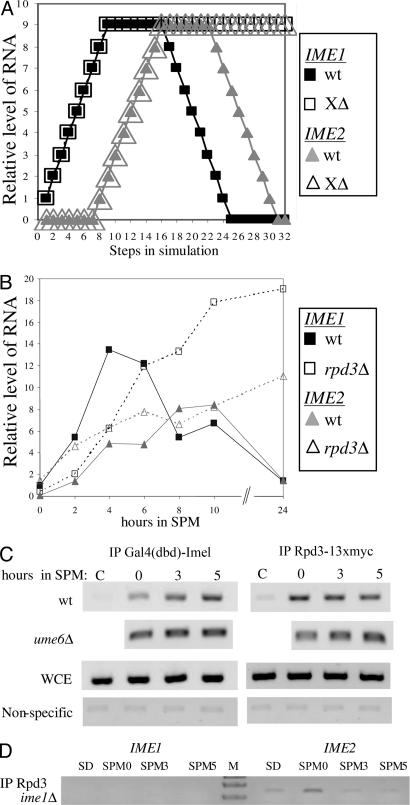Fig. 3.
Rpd3 is recruited by Ime1 to its promoter, serving as a negative regulator. (A) Simulation of the network upon deletion of the outgoing edge from X. The initial state of IME1 RNA was 1, that of Ume6/Rpd3 was 9, and the other nodes were in state 0. (B) Wild-type diploid cells (Y1635-1) and their isogenic rpd3Δ/rpd3Δ cells were shifted to meiotic conditions (SPM), and RNA was isolated at the indicated hours. The level of IME1 and IME2 RNA was measured by quantitative PCR. Filled squares, IME1 wild type; filled triangles, IME2 wild type; open squares, IME1 rpd3Δ (XΔ); open triangles, IME2 rpd3Δ (XΔ). (C and D) Samples for ChIP analysis were taken from cells incubated in SPM for the indicated times or from synthetic dextrose (SD)-grown cells. The PCRs amplified either the IME1 gene (C and D) or the IME2 gene (D). The diploid strains used were Y422 (wild type), Y449 (ime1Δ), and Y1326–1 (ume6Δ), carrying on 2 μ vectors the following chimeric genes: IME2 (YEp1791), RPD3–13xmyc (YEp2546), and pADH1-gal4(dbd)-ime1(id) (YEp2780). Antibodies directed against myc and Gal4(dbd) were used for IP. WCE, whole-cell extract.

